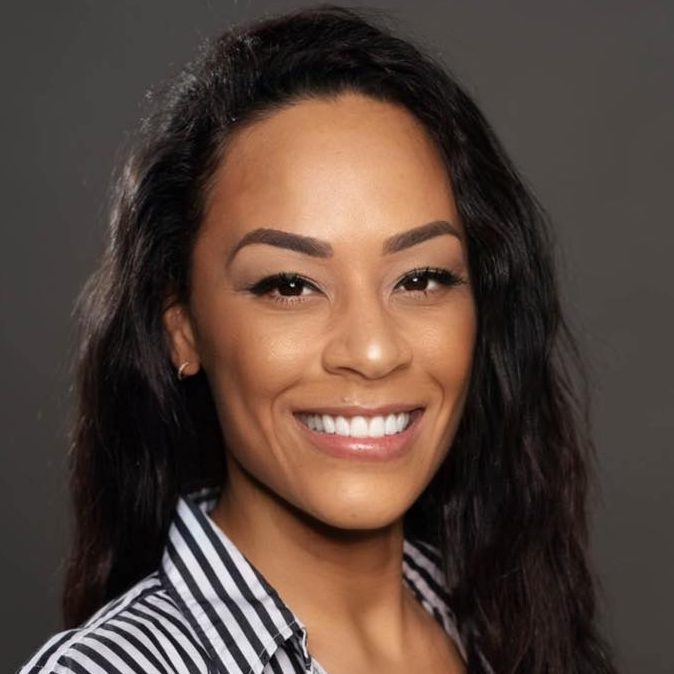Ariane’s Ewing Sarcoma Story
Ariane shares her Ewing sarcoma story, including going through chemotherapy, surgery, and radiation therapy.
She also highlights how she dealt with being an AYA (adolescent young adult) cancer patient and managing through depression, body positivity, and survivorship. Thanks for sharing your story, Ariane!
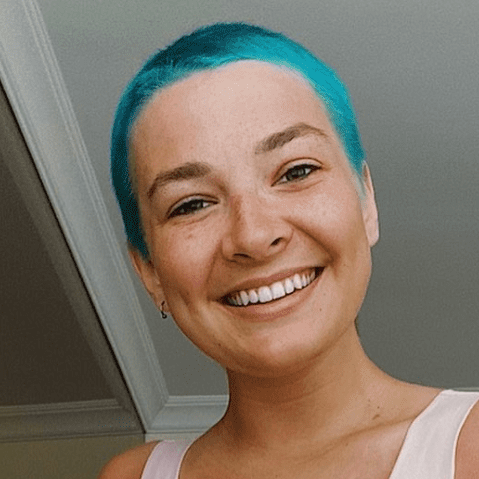
- Name: Ariane B.
- Diagnosis (DX):
- Ewing Sarcoma (bone)
- Age at DX: 20
- 1st Symptoms:
- Aching in arm
- Lump in forearm
- Treatment:
- 14 cycles of chemotherapy
- Surgery (resection of the radius)
- 36 treatments of radiation therapy
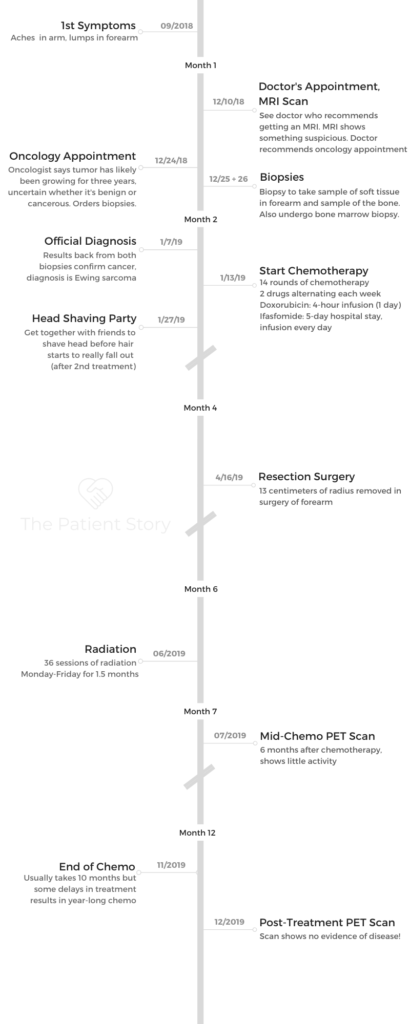
Everybody needs help, whether you’re a cancer patient or not.
Talk about your feelings. If you’re not comfortable, just talk to a friend, somebody who will listen. And you’re not alone in that.
Ariane B.
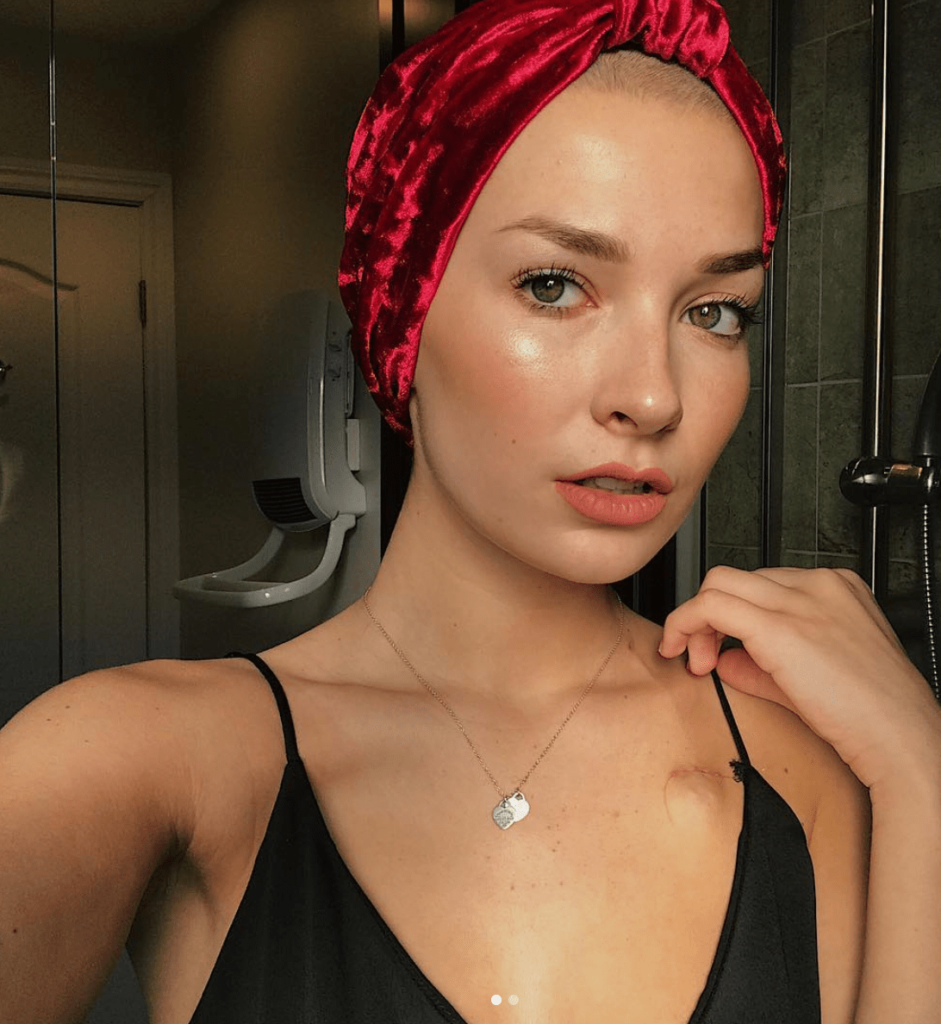
- Symptoms & Diagnosis
- Biopsies
- Treatment Plans
- Chemotherapy & Side Effects
- Chemotherapy for Ewing sarcoma
- Schedule for chemo infusion
- Port surgery for chemo
- What helped get you through chemo?
- Losing hair from chemotherapy
- Doxorubicin side effects
- How long did those side effects last?
- What helps prevent the chemo side effects?
- Ifosfamide chemotherapy regimen
- Passing the time during the hospital stay
- Ifosfamide side effects
- Surgery
- Radiation Therapy
- Results & Follow-Up
- How many PET scans did you have?
- How was the second scan?
- How did you pass the time waiting for scan results?
- Results of your post-treatment PET scan
- Why do you get a CT of your lungs as part of follow-up?
- How long do you have to continue with this follow-up schedule?
- You had to have one last surgery
- Advice on retraining how to use your less dominant hand and arm
- Mental & Emotional Impacts of Cancer
- Finding a cancer community
- Being a young adult cancer patient
- How has cancer changed your life perspective?
- Getting through the depression caused by cancer
- It’s okay to ask for help
- Cancer’s impact on relationships
- Egg retrieval to preserve fertility options
- Body positivity
- Building self-confidence
- Cancer survivorship
- Recovering from cancer and treatment during coronavirus
This interview has been edited for clarity. This is not medical advice. Please consult with your healthcare provider for treatment decisions.
Symptoms & Diagnosis
First symptoms of Ewing sarcoma
I’m into climbing. When I was in university, there was an ache in my arm. I was doing climbing with my boyfriend and my friends. I was like, “There’s something up with my arm. I don’t know what it is.” I just felt like my right arm was less strong than the other one.
I hadn’t had any signs of it. Maybe I was a little bit tired. I was tired and my arm was aching, but apart from that, I hadn’t had any big symptoms of cancer.
What made you finally go to the doctor?
I waited for months. After I felt a lump in my arm, I went to the doctor. She said it was probably [because] I went climbing and my tendon kind of ripped apart.
We went to do an MRI. Then we saw there was a fracture in the radius. We didn’t know if it was from sports or other things. My doctor called me and said that I would have to go see an oncologist.
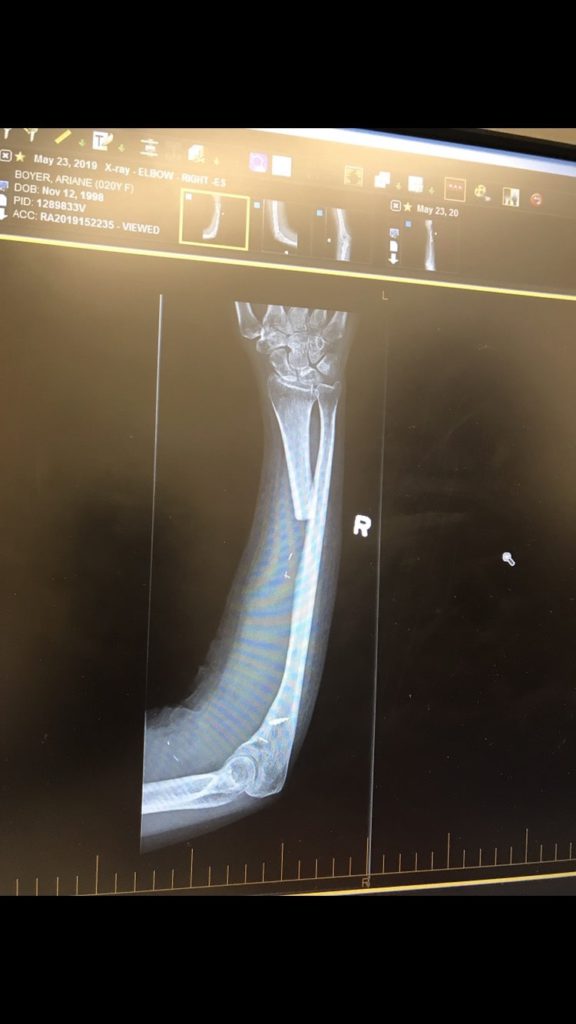
What happens at the MRI scan?
The technician at the MRI told me, “Did you break something doing a sport?” I was like, “No, I don’t remember hurting myself.”
The technician said, “Well, if you didn’t hurt yourself, I think it’s serious. It’s more like there’s something in your body that physically is hurting you.” That’s why my doctor was preoccupied with it.
Hearing “cancer” for the first time
My doctor called me one morning, and she said the word ‘cancer’ in the call. I was like, ‘What?’
And I just began crying because I was not familiar with cancer.
My grandmother had it, but it was very far from me. I was really young when she had it. So I was really not familiar with it. It completely shattered me when I heard the word because I was like, “What is this?”
»MORE: Patients share how they processed a cancer diagnosis
What do you learn at the first oncologist appointment?
When I saw the oncologist, it gave me a little bit of hope because at the first appointment that I went with him, he said, “Well, it may be benign. It may be a cancer. We don’t know yet. Let’s wait for the biopsy.”
That kind of gave me a little bit of hope. At the start it was rough, and then after it was like, okay, maybe it’s some kind of benign tumor. Maybe it’s something else.
After the MRI, my appointment with my oncologist was very fast. It was probably five days after the MRI because the the tumor was very, very big. My oncologist said that was probably there for three years.
Biopsies
What happens at the biopsy the next day?
The biopsy was really invasive. They have to take the tumor, which was in the soft tissue and also in the bone. They had to take samples of both the soft tissue in my forearm and a sample of the bone. There was this clicking noise.
They just take a part of the bone, and it’s pretty painful. They have to anesthetize locally, so you’re not sleeping or anything. It is just local anesthesia. It was pretty hurtful.
Getting a bone marrow biopsy
I did all biopsies the same day. We got the call about a week later. They said the bone marrow was clear and everything was fine.
That was great news. No other form of cancer anywhere in the body. We were pretty happy.
Are the two biopsies similar?
I think it was the same needle.The instrument was a little bit thicker to get a good sample of bone, but pretty much it’s the same thing. You hear a clicking noise and then it pops out, so they’re pretty similar.
When did you get the biopsy results?
I had my first oncology appointment like the 24th of December, and then we did the biopsy one or two days later.
On the 7th of January, we got the diagnosis.
Getting a cancer diagnosis
I have two doctors. One is my surgeon, and the other one specialized in my type of cancer. I saw both the same day.
The visit was really weird. I went into the office, and my oncologist had a new intern with them. The intern was looking down and kind of emotional. I think it was this first diagnosis with a patient.
So he was really kind of awkward and just sad. I knew that something was wrong because they were looking down, and I knew this was not going to end well.
He told me that it was cancer and that I would be doing 14 rounds of chemo and radiotherapy, I would have an arm that was gonna be different than the other one, I would have surgery, that my life would change, and that I would no longer have hair.
So he put me through a lot and gave me a lot of information in a little time. I think he wanted to get it over with and rip the Band-Aid off. Then we headed out, and we told my family. It was a very weird day.
»MORE: Patients describe dealing with scanxiety and waiting for results
Treatment Plans
Who went with you to the first oncology appointment?
It was my mom and my dad who were there. My brother was working. They wanted to be there the day of diagnosis, so they were there.
My mom almost fainted. She was in the oncologist’s room. In the room there was a little bed when you do the [blood] pressure everything, and my mom was just there with a wet cloth. [She] almost fainted. That was kind of funny.
I was there receiving the diagnosis. I don’t remember if I cried or anything. I think that day I cried, but in the oncology room, I didn’t. My mom and my dad did cry.
It’s weird because you’re the one receiving the diagnosis, you have all this weight on your shoulder, and you find the strength not to cry, but your mom and your dad are crying.
So that’s a pretty weird situation. But you have to be strong in those moments.
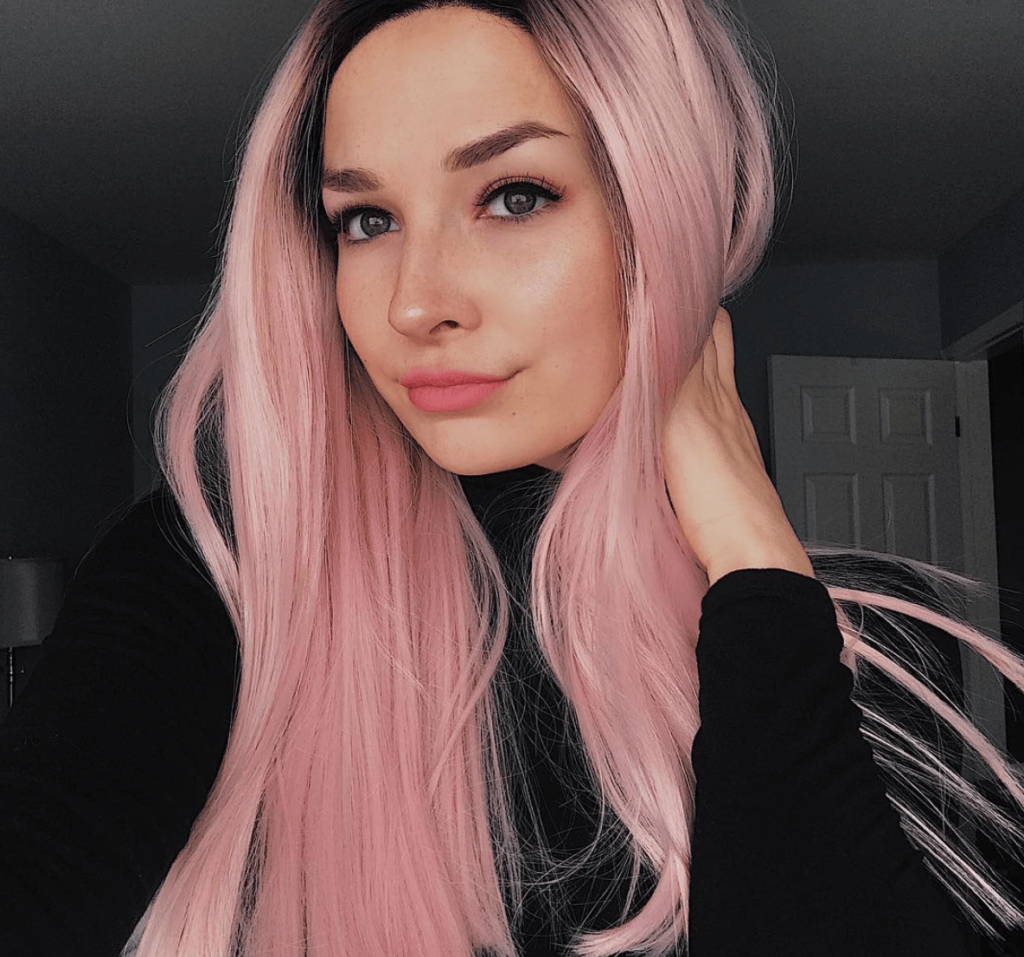
How did your oncologist describe your cancer?
He explained to me that Ewing sarcoma is a pediatric cancer. You get Ewing sarcoma in between 15 and 30 to 35 years old. I’m old to get Ewing sarcoma.
It’s people like young children or very young adults that get it. He also said normally it’s kids who have it and men who have it.
And in the forearm it’s weirder, because normally it’s in the big artery of the body and normally the legs and the hips. The fact that the cancer was in my arm was very odd.
What were the next steps?
The next step was to get chemo as soon as possible because the tumor was there a long time ago. He said, “You have had this for a long, long time,” like probably three years, they think.
They didn’t tell me the stage. I don’t think it’s anywhere near stage 4 or 3, because I just had cancer at one place and all my body was clear.
Chemotherapy & Side Effects
Chemotherapy for Ewing sarcoma
The chemo regimen that I went through was doxorubicin and ifosfamide. Doxorubicin is called the red devil. This type of chemo is pretty rough. It gives you really big nausea. I went through my first chemo, and the first bag that they gave me was doxorubicin.
It was weird because the chemo is red. In movies, you see the chemo, and it’s clear. I don’t know. I wasn’t prepared for that. When I went to the bathroom, it was obviously red, and it was very weird.
»MORE: Read patient experiences with doxorubicin (Adriamycin) chemo
Schedule for chemo infusion
Once every three weeks, and I had two different types of chemo. One is four hours, and I just went in and went out of the hospital. Three weeks later, I would have a five-day stay.
One was the doxorubicin and the other ifosfamide. The doxorubicin infusion was four hours, and the other one I was having a five-day stay at my hospital to get ifosfamide because that’s one type of chemo that was making my bladder more sensitive.
I could have blood in it, so I would have to go for a five-day stay just to check on me, check on my bladder, and see how I was doing. I’d have three hours of infusion a day.
I did 14 cycles of chemo during one year. The process would normally take 10 months, but it took me a year just because I had some things happen.
Port surgery for chemo
The installation was awesome. I didn’t feel anything, but two weeks after they put it [in], it was a weird feeling, like something is wrong with your body, something is extraterrestrial a little bit. You’re like, “What is this?”
But you get used to it. Now it’s part of my body. I was afraid to show it before. When I went to the spa and to a pool, I was not ashamed of it, but it made me kind of different and I knew that, so I wanted to hide it. But now it’s not a problem. I have scars all over my body, and it’s a part of me.
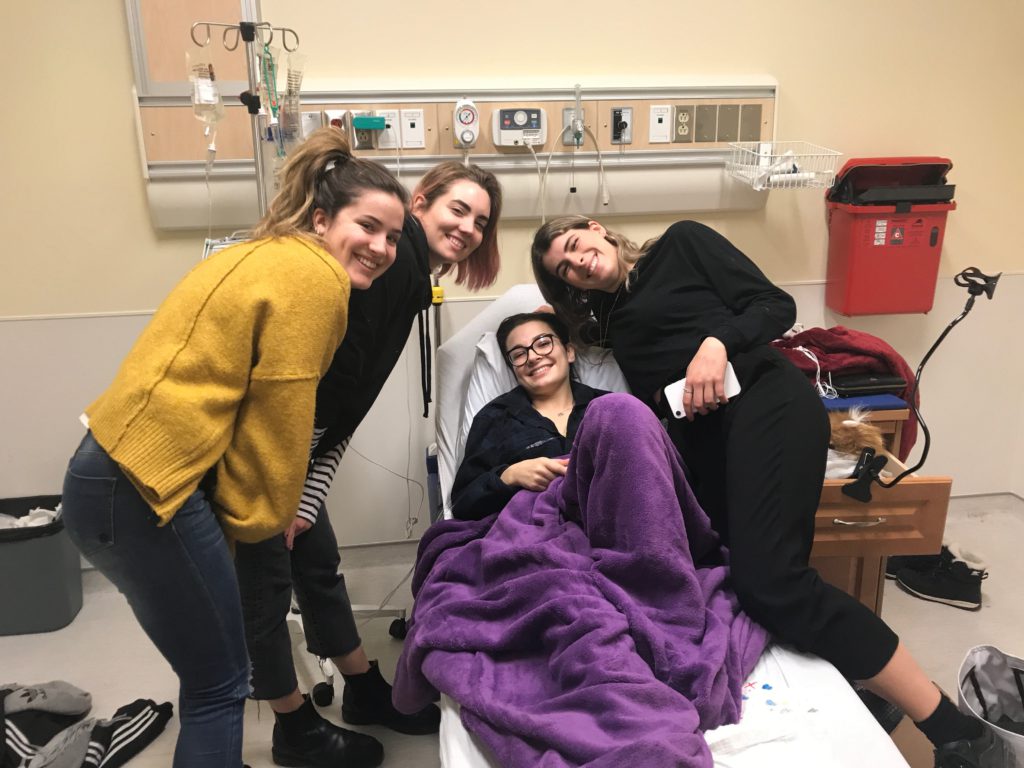
What helped get you through chemo?
My three friends were there. It was nice to have them by my side when I was doing the chemo.
And my mom also was there, and they were taking turns coming into my room to see how I was doing. My friends made me laugh, like all the way through.
I remember there were some candy stripers. They give you gifts. Some little, old woman came into my room and gave me a blanket, a water bottle, some candy to chew on during chemo. She was so cute.
They gave me some drawing that some kid did in the school and said like, “Have a good first chemo. I’m behind you,” and you have the name of the little kid that drew you something. So it was pretty cute.
I keep the drawing. Every time I was doing my chemo, I put it in the chemo bag to remind me that people are behind me. I have family; I have people that care for me. I didn’t know who the child was, but it was a cute ritual.
»MORE: What kind of support cancer patients say helped the most
Losing hair from chemotherapy
I listened to my oncology nurse, Judy. She said to me to shave my head after the first treatment, because normally with Ewing sarcoma with the chemo regimen, your hair starts to fall out after the second chemotherapy.
So after the first treatment, I had a little buzz cut that my hairdresser made me, like a little pixie cut, which I loved. Then after my first chemo treatment, we did a shaving party at my house.
We put some trash bags all over my living room, and we just shaved it off. We actually did a mullet on my head. We laughed a lot, played music. It was really, really fun.
»MORE: Dealing with hair loss during cancer treatment
It was really empowering actually to shave my head. It’s like I was having some type of control over this situation that I was put in. It was really fun.
Then after my second chemo treatment, my hair was shaved. A hair follicle would fall out, and I was like, “Oh, thank god I’ve shaved my head because I wouldn’t be able to bear losing a lot of hair.” I had pretty long hair prior to cancer.
My nurse was like, “You don’t want to see that. You don’t want to clog your drain. It’s pretty traumatizing. So just shave it off. Get it over with.”
Doxorubicin side effects
The infusion was four hours, but I began to feel some side effects two hours after the first infusion, like big nausea. You feel really foggy. It’s like you’re in a dream almost.
My regimen is really strong, one of the strongest ones, according to my oncologist, [along] with leukemia. So it’s a pretty strong regimen.
It makes you a little bit loopy. It’s difficult to talk, and you feel really sleepy. I would go to my house after my treatment, and I would sleep probably 16 hours a day, so I was really tired.
I had injections (called Grastofil) after the infusion to get my white cells up. That would cause me to have a big bone ache, like my body was hurting a lot because I wasn’t producing enough white blood cells.
With that come the mouth sores. I didn’t have them the first treatment. It probably came at the end, probably at my eighth chemo or ninth chemo, when my body was tired of all the chemo and my white blood cells were really low.
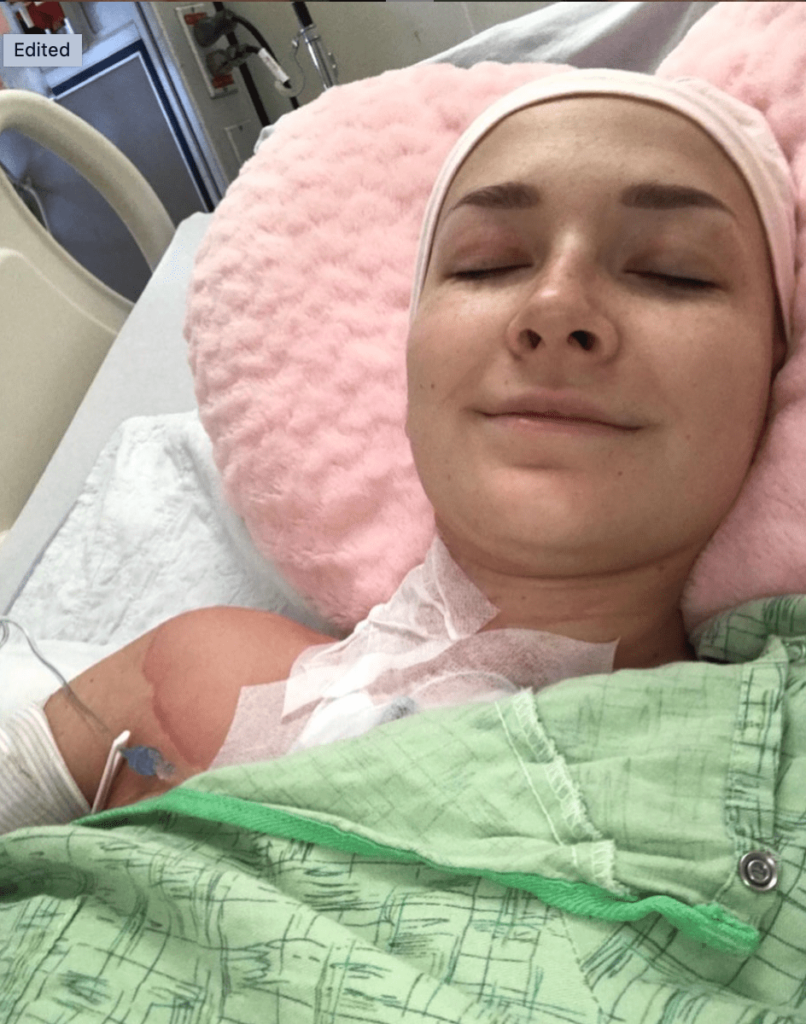
How long did those side effects last?
With the four-hour injection, it was probably two weeks of side effects. Because my chemo was every three weeks, I had like a week when I was good.
I had no side effects, my energy went up, and I could go do walks in the park with my mom and my grandmother. That was nice to have, a week of break between chemotherapy infusions.
»MORE: Read patient experiences with doxorubicin (Adriamycin) chemo
What helps prevent the chemo side effects?
I took some pills that gave me some appetite that they prescribed me, but I also was on THC and CBD oil, which helped me a lot with body aches. My appetite was better when I took the oil.
I like to be an advocate for that because I know it’s kind of taboo to talk about that. Some cancer patients don’t believe in THC or CBD, but I really believe in it. So that helped me a lot with it.
»MORE: Cancer patients share their treatment side effects
Ifosfamide chemotherapy regimen
During the first five-day stay that I did at my hospital, I was so stressed out because I had never slept in a hospital ever. Just hearing the beeping at night made me so stressed out.
I was just always like eyes wide open during the first night. I was like, “What is happening?” I was trying to process all of that.
My nurse that was with me the first time that I got there was like, ‘Take a shower. Breathe.’
She noticed that I was really nervous and restless. I would go to the bathroom every 10 minutes. The second stay, the second time I went to the hospital for this type of chemo, I was a lot more calm. I was just at peace with it, but the first few nights it was it was really weird.
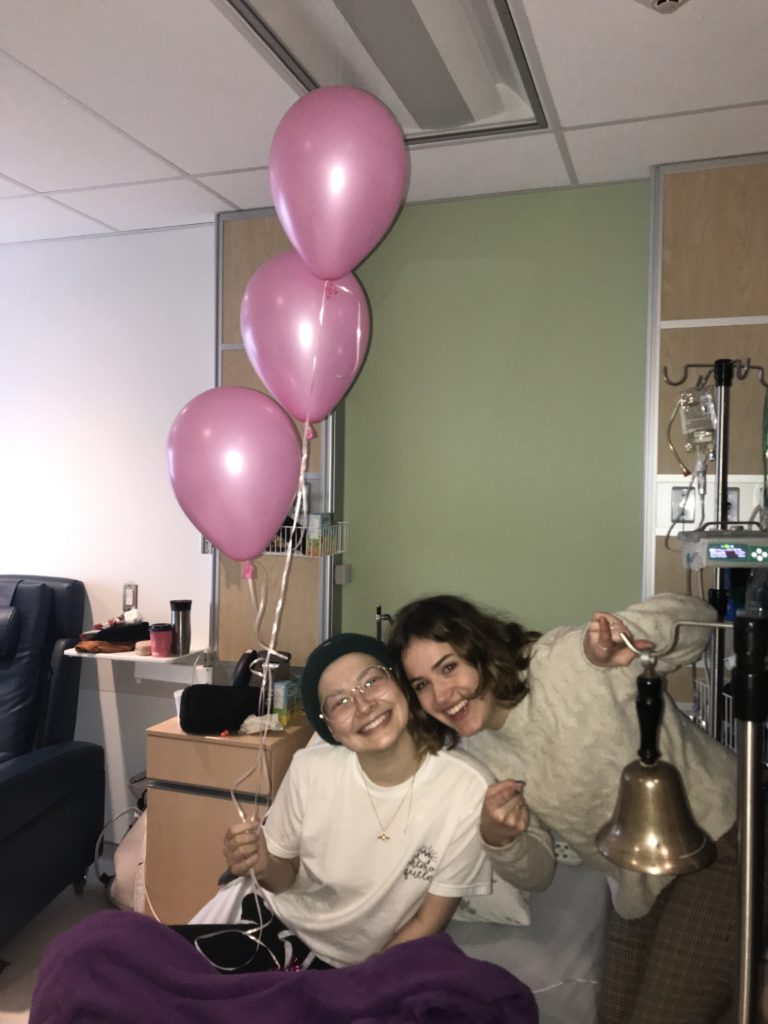
Passing the time during the hospital stay
I had a blood test every day for the five-day stay. Every morning, I would wake up with a nurse that was just waking me up and like, “Can I take your blood?” I was like, “Yeah, yeah, sure.”
You get used to it. You just bring books. I was playing on my computer, watching films a lot, and you get used to it. But the first time it was boring. It’s a hospital; you just go around. There’s a little flower garden at my hospital. I would go there and just watch, doing pretty boring stuff, but that’s what I have to do in order to get better.
Ifosfamide side effects
This chemo was better than the other one. It was just fatigue pretty much and a little bit of nausea, but not as bad as the other one. I hate the doxorubicin, the other type of chemo, way more than the five-day stay.
When you get your mind to just accept the fact that you’re here for five days, it’s pretty much like you’re done. It’s not a problem, but the other one is much more intense.
Surgery
Transitioning from chemo to surgery
The chemo was supposed to shrink the tumor. After, we did the operation, which was a resection of the radius, where they removed 13 centimeters of radius. That was a big operation. My arm shrank a little bit, and the bone is different.
Describe the surgery
It was supposed to take four hours, but it took six because they wanted to save some nerve that may be able to move my finger. They were able to save it, but that made the operation longer.
I woke up very sick because of the anesthesia. I think I had some sort of reaction. I was vomiting a lot, and I was feeling pretty nauseous. It was hurting a lot. It’s not every day that your body’s just removed a bone. So it was a really weird feeling.
When I woke up, I just remember that I was moving my other hand, and I wasn’t able to move the other one. It was really weird. I wasn’t having complete control of my body.
»MORE: Read more patient experiences with surgery
How long does it take to recover from surgery?
I was only getting the operation and staying for one night. After, I would get to go home, so it wasn’t that bad. They put me under a lot of anesthesia and just gave me a lot of drugs, a lot of morphine, to handle the pain. It was a lot, even with the morphine.
I was staying in a six-patient room, which was loud, very, very loud. Usually at my hospital, I’m used to being alone in my room for my chemo, and I thought that was going to be the same for the operation when I woke up, but I was with six people.
Recovering at home after surgery
I had a cast for a month and a half. I wasn’t able really to move my head a lot. After a month and a half, they decided to start the radiotherapy. They would remove the cast, do my radiotherapy, and then redo the cast after.
Radiation Therapy
Describe the radiation
I had a 36-session of radiotherapy so it was a month-and-a-half long. Every day, Monday to Friday, and I had a Saturday and Sunday to rest. Then after we would be back for the week, for a month and a half.
It wasn’t that bad actually. I know for some people, it makes them sleepy and just really tired. But for me, it wasn’t that bad.
For sure I was tired in the end, but they would just remove my cast and do radiation.
You know, where you would go into a tanning bed, just sit there and relax. I would put on music, my favorite Spotify playlist. The nurses were really cool, and they were really nice to me when I was doing radiation, so it wasn’t that bad.
How long is each radiation session?
It wasn’t that long. It was seven minutes, and it was on my arm. I know some people get radiation on the breast and it makes the organs work different; they have some side effects. But for me it was the arm, so it was pretty much harmless.
»MORE: Read other patient experiences with radiation therapy
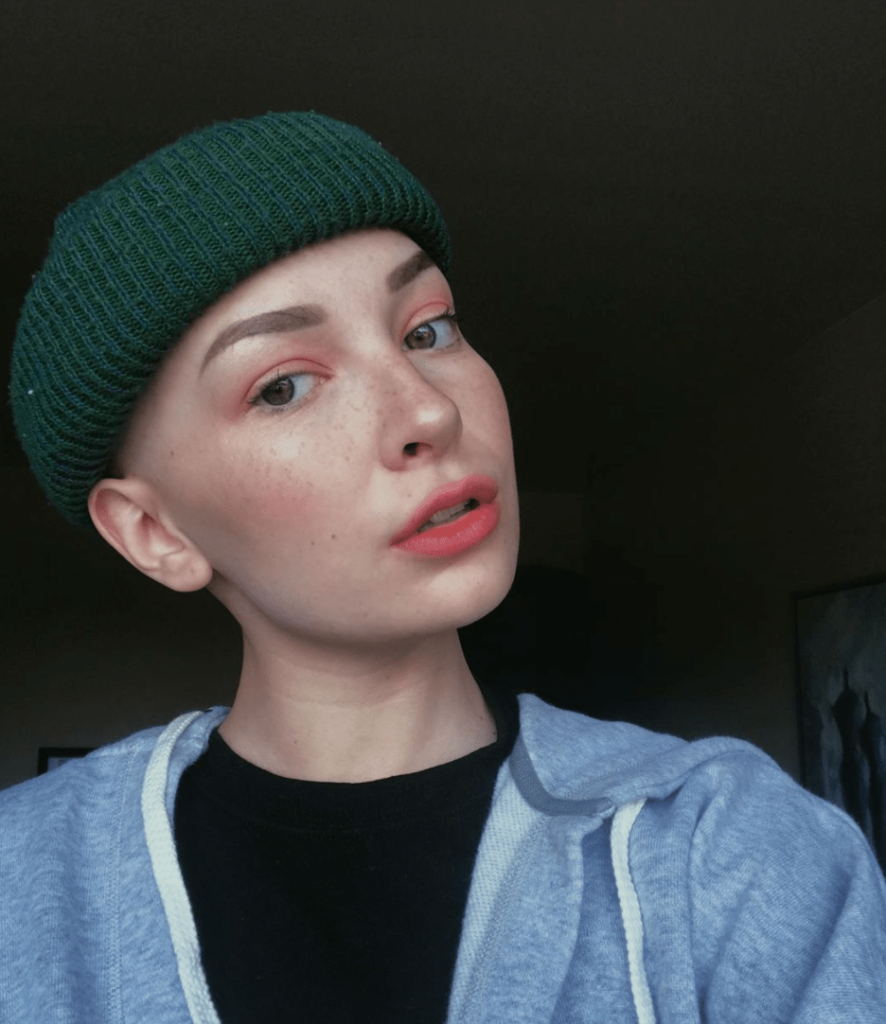
Results & Follow-Up
How many PET scans did you have?
I think three PET scans. One at the beginning with my two biopsies that I talked to you about, one six months after my first chemotherapy to see if the chemo was working, and one a year after the first chemotherapy at the very end.
How was the second scan?
The middle PET scan showed that there was still some activity in the arm, so that was disappointing. But the tumors shrank a lot, so we were happy the chemo worked.
But my oncologist said there was some activity in my arm and they had expected that the tumor would completely be gone. During the operation, my oncologist thought that it would be a better idea to remove the tumor and to remove the bone, so they had to do two things instead of just removing the bone.
How did you pass the time waiting for scan results?
Friends, family, a good support system.
Also, I would say to myself, “Don’t think about it.” If you’re sad about it, you’re just wasting time being stressed out and just feeling anxious. You want to be in the moment.
If everything is about to collapse, you’ll be better off being happy in this moment now.
»MORE: Patients describe dealing with scanxiety and waiting for results
Results of your post-treatment PET scan
Everything was clear! My oncologist called me and said that they were really promising results, and I was really happy. I cried of joy. I’m so happy. There was no relapse after the chemo and the radiation.
I was really anticipating that call because I wanted to be cancer free and have the label on it. It was really emotional because I felt in the last year I wasn’t having any control over my life.
Now, I feel like I have some sort of path. I’m just following this path and just living my life as I would prior to cancer.
After the whole coronavirus thing, I can do activities, go out with my friends, not be scared of germs anymore because I was really weak at the time when I was doing treatment. So just experiencing life to its fullest, I guess.
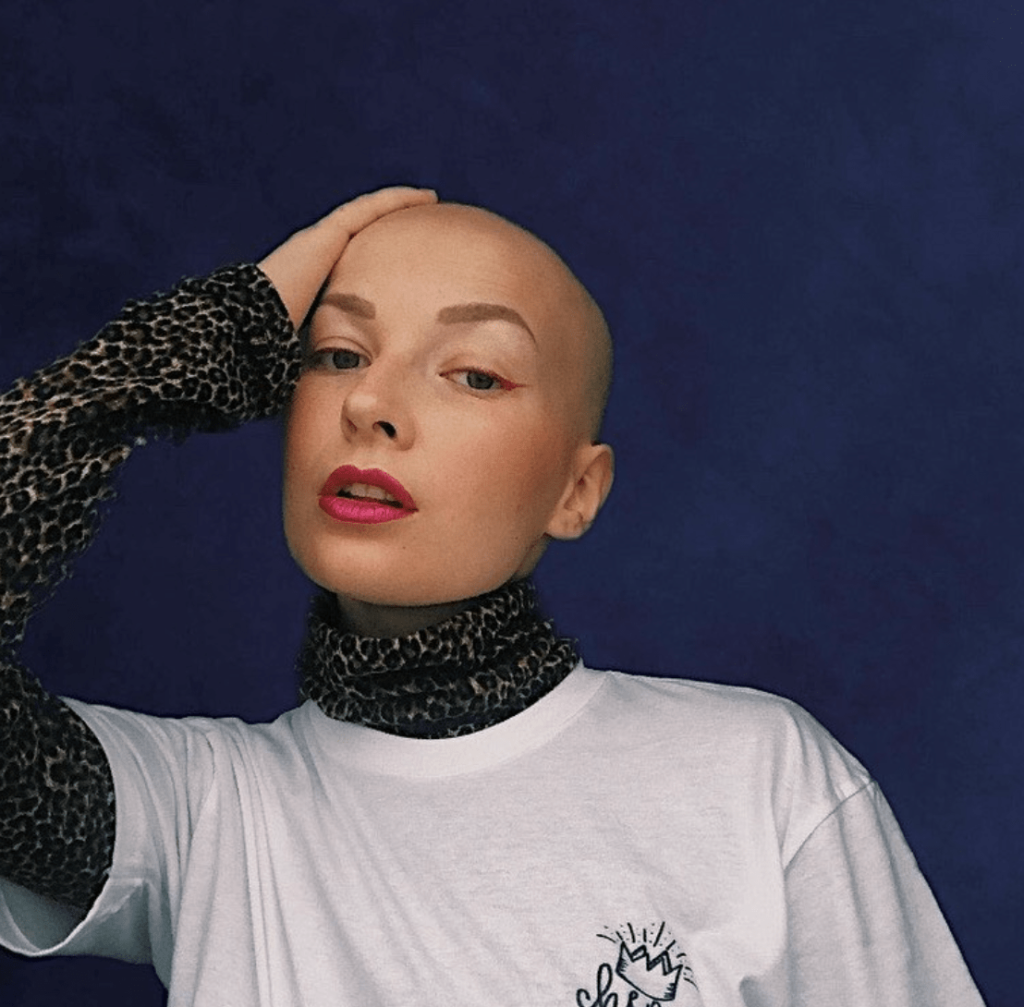
Why do you get a CT of your lungs as part of follow-up?
For Ewing sarcoma, if you get a relapse, it’s normally in the lungs. It could be in your body, but normally when you do have a relapse, it’s in the lung.
I don’t know why. It just works like that. So I have a CT of my lungs every three months with the PET of my whole entire body.
How long do you have to continue with this follow-up schedule?
I think it lasts five years. After that, it’s a PET scan every six months for 10 years, then it switches to once a year after that.
You had to have one last surgery
I did because the radius was shortened and the other bone was compensating for the other one, so it was shifting a lot. The surgery was to just realign them.
It will eventually change the function. You see how much the movement is not the same. I’m a little bit more restricted on my right arm. I could use my arm better in the future. I could write, but I’m practicing writing with my left arm.
Advice on retraining how to use your less dominant hand and arm
At the beginning, I was really bullheaded. I was like, “I’m going to use my right arm despite the restriction that I have with it. I’m just going to use it.”
But over time, it’s just kind of shifted. I would see myself eating with the left arm, and I was like, “Oh, that’s weird.” The human instinct just took off, and I just started using my left hand.
Mental & Emotional Impacts of Cancer
Finding a cancer community
I would have gone on the internet to have a community quicker because I didn’t know at the time, at the beginning of my cancer journey, that so many people were living the same thing as me.
[I wish I had gone] on social media and just told my story a lot quicker so I would have the support system that I would have now, but I’m happy that everything fell into place in the end.
Being a young adult cancer patient
Things I really hated about it is that we have a sarcoma unit at my hospital, and I’m the youngest one. Nurses and even patients were like, “Oh, look at the youngest patient of the sarcoma unit.”
Sometimes I love that because nurses [and] people who work there just recognize me almost instantly, and they were really compassionate and sweet with me.
But sometimes, I’d be going through the sarcoma unit with some old people looking at me like, “Oh, she’s too young,” and having pity for me. It made me kind of angry. I wasn’t prepared for that. I didn’t want people to have pity for me.
How has cancer changed your life perspective?
I said to my friends the Ariane before was much more naive about life and about relationships. Now I can live in the moment and understand depression and what anxiety feels like.
Before, I was not comfortable with the term ‘depression’ and what is anxiety. People were talking to me about it, but I wasn’t able to really understand it. Now I can really help people with it.
Getting through the depression caused by cancer
When it was my first oncology appointment, they were offering me some help from psychologists. And I instantly took it. Just because I wasn’t able to deal with cancer at the time, I was really stressed out. If a psychologist is here to help, I’m going to take the help for sure.
I’ve done probably 60 hours of therapy now, and now I have the psychiatrist to take care of me. It’s been a journey, but I’m here. In the middle of treatment, I was feeling really depressed. I was feeling really helpless, and the treatments were really getting to me.
I was really sad, just weak, and then I started to take medication and to see if psychiatrists also helped me.
Now I’m on the journey to find the perfect medication for me. I think it’s working with the help of my psychiatrist, so I’m really happy about it, but it was a process certainly.
It’s okay to ask for help
My psychologist said something to me that really stuck with me. Everybody needs help, whether you’re a cancer patient or not. Everybody needs therapy. Everybody is hurting in some type of way. It’s in your head.
So just really get help. Talk about your feelings. And if you’re not comfortable, just talk to a friend, somebody who will listen. You’re not alone in that.
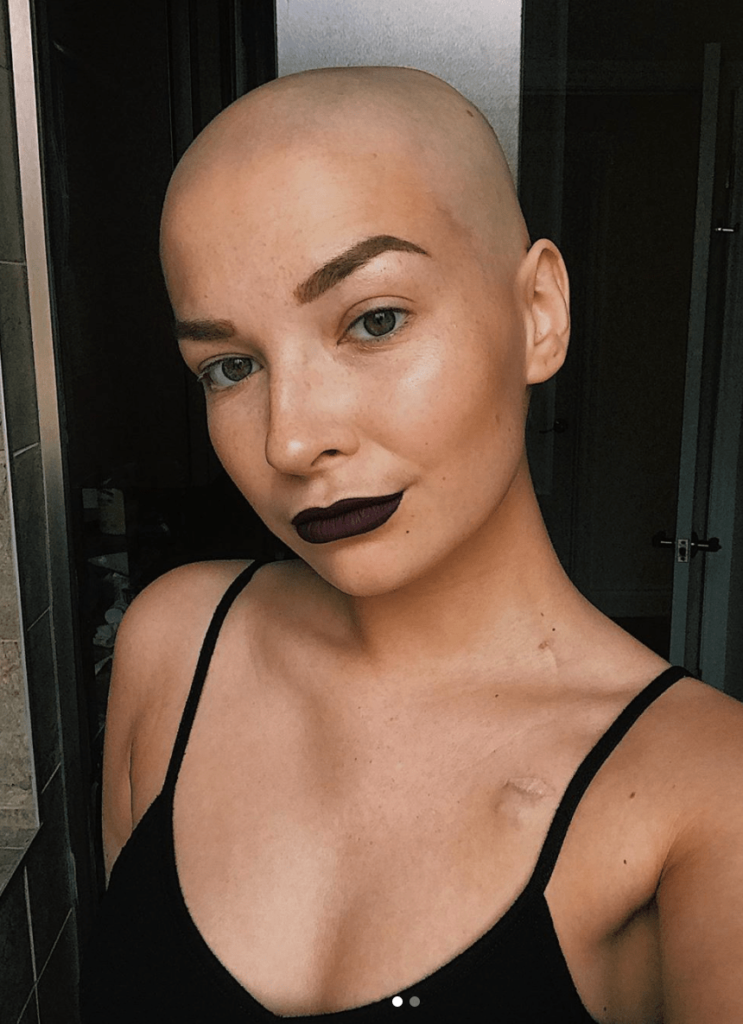
Cancer’s impact on relationships
It certainly pushed off people who were not there for the right reasons, who were really utilizing me and just not being there when I really needed them.
It pushed away the persons that were not really important for me. The friends that actually came to my chemo and my family who also were there for my chemos were the important ones.
I say I have a family and a chosen family. My friends were really the ones that made me happy during times that I needed them the most.
Egg retrieval to preserve fertility options
I had a boyfriend at the time. They took out eggs. There were 21 eggs that were fertilizable, so I could potentially have a baby with them.
Right now I’m maybe not fertile, but I’m able with these eggs to have children in the future. So I’m really happy about that.
»MORE: Fertility preservation and cancer treatment

Body positivity
In sarcoma, it’s so important because there’s a lot of resection. There’s a lot of operations with sometimes limb loss or things that could have happened in the way with a sarcoma patient.
At the beginning, I was really wearing baggy clothes and just not exposing my body to people just because I wasn’t confident. I was being asked a lot of questions like, “What happened to your arm? Did you fall off your bike?” That made me feel really uncomfortable.
Now I’m able to go outside showing my arm and just regaining confidence in my body, getting tattoos that are meaningful to me. That just makes me feel confident. Regaining confidence for a sarcoma patient feels like it’s a big thing.
Building self-confidence
You actually have to get outside of your comfort zone. Like my psychologist says, just go outside for a day not feeling comfortable, but just pushing yourself to go outside with your arm just laying in the sun, and you just do it.
You’re just like, “Okay, I’m scared. I don’t want to do it.” But it’s fear. You have to get over it. So you just go outside, and you try to feel as confident as possible. Fake it till you make it.
It’s different for every person; I just work like that. Fake it till you make it and just do things that will feel good, like tattoos for me or doing exercise. Not in an excessive way. Just in a way that you’ll love your body a little more.
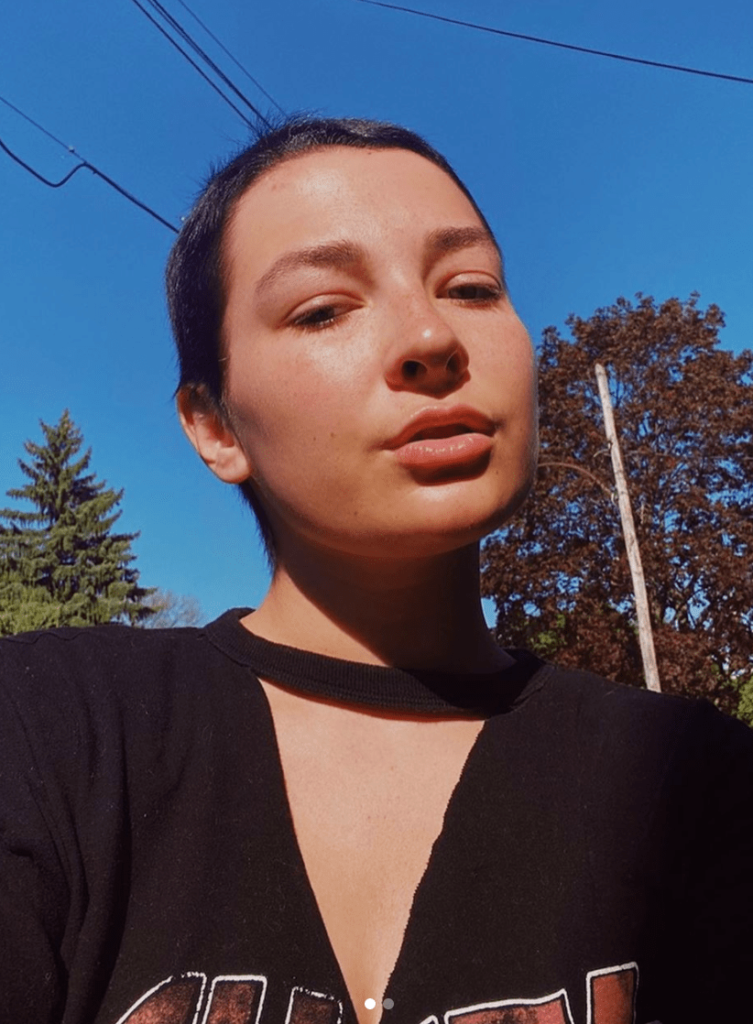
Cancer survivorship
Go see a psychologist first and just occupy yourself. It’s a weird time with coronavirus, but normally I would go to school, do things with my friends, and just occupy myself.
Don’t stay in your room. Don’t be on your phone all day just because you don’t want to face the world. Just go out there and do activities to occupy your mind.
It’s okay to think about it. As my psychologist once said to me, fears are like a snake in the middle of a room. If you’re stuck with the snake in the middle of the room, the first hour, you’re going to be really scared of it.
But after three or four hours, if the snake doesn’t attack, you’re just going to distance yourself from the fear, and then you could get over it. So I think it’s a great metaphor to live by.
Recovering from cancer and treatment during coronavirus
It’s weird. I was saying to my mother that I was feeling like I had my liberty again. Now I’ve been put in my home, and I’m restricted to do everything that I wanted to do.
But I know it will come someday, but it’s been a year that I’ve been in my room. I want to go out; I want to do things that a 21-year-old would do. For now I can do them.
So I’ll just have to be accepting of that and seeing that I’m just lucky to be here. Lucky to be alive and to be here.
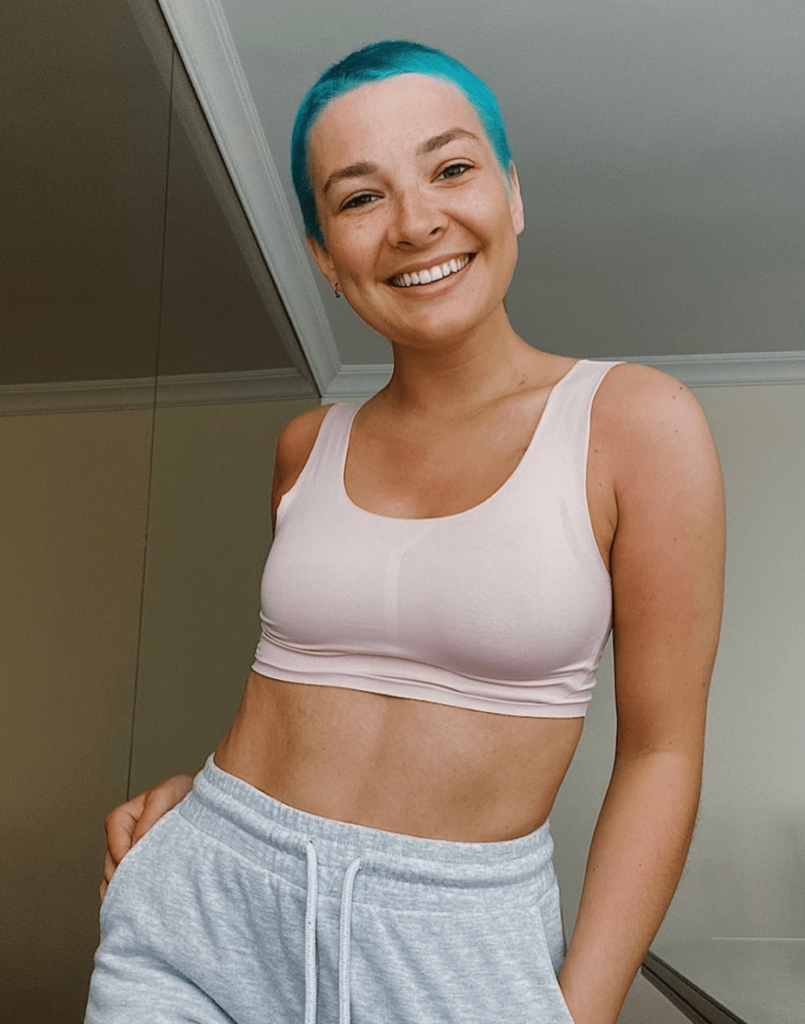
Inspired by Ariane's story?
Share your story, too!
Ewing Sarcoma Stories
Ariane B., Ewing Sarcoma (Bone)
Cancer details: Most common in kids, young adults (teens through mid-20s)
1st Symptoms: Aching in arm, lump in forearm
Treatment: Chemo (14 rounds), surgery (of radius), radiation (36 sessions)
...
Brandi B.,
Ewing Sarcoma,
Stage 1B (Soft Tissue)
Cancer Details: Adult case of soft tissue Ewing sarcoma, not bone sarcoma
1st Symptoms: Extreme fatigue, lump in pelvic area
Treatment: 17 cycles of chemotherapy in-patient at hospital with (leg-sparing) surgery in between
...
